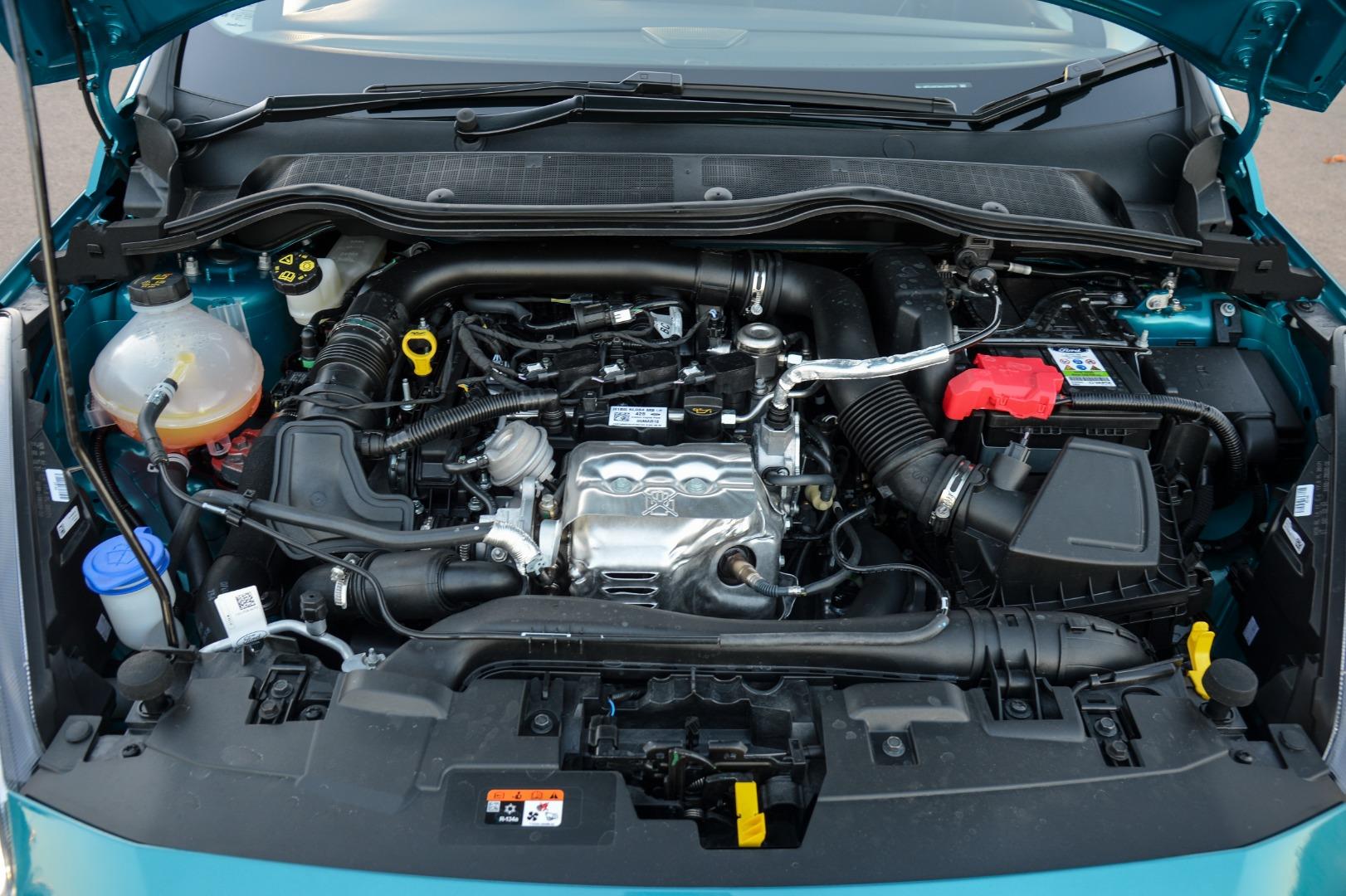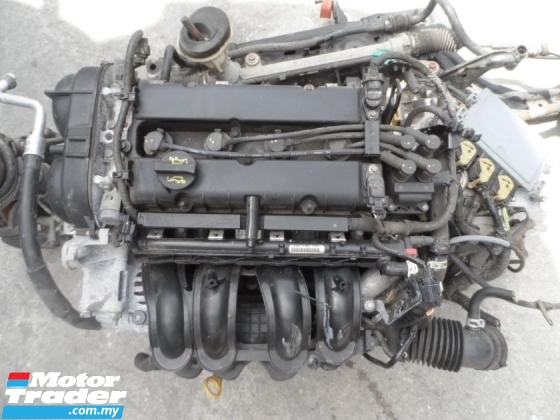How a Well-Maintained Ford Fiesta Engine Improves Vehicle Longevity
How a Well-Maintained Ford Fiesta Engine Improves Vehicle Longevity
Blog Article
The Future of Engines: Advancements Driving Lasting Power Solutions
As the automotive market browses the imperative transition towards sustainability, the future of engines is increasingly specified by groundbreaking innovations. Electric engine advancements, along with promising advancements in hydrogen gas cells and biofuels, are improving the landscape of power remedies.
Electric Engine Developments
The evolution of electrical engine developments represents an essential shift in the aerospace and automotive markets, driven by the immediate need for lasting options to fossil fuels. This change is identified by substantial developments in battery innovation, power electronics, and electrical motor layout, which jointly improve the effectiveness and efficiency of electric engines.
Recent advancements have actually caused the creation of lighter, a lot more energy-dense batteries, such as lithium-silicon and solid-state batteries, which promise longer ranges and much shorter charging times. In addition, improvements in electrical motor performance, such as using long-term magnets and advanced cooling down systems, allow electrical engines to run efficiently under varying problems. These enhancements not just enhance automobile efficiency yet also add to a decrease in overall power usage.
In addition, the combination of advanced software program algorithms has actually maximized power monitoring in electric lorries, allowing for regenerative braking and predictive billing techniques. As suppliers progressively embrace electric propulsion, the vehicle and aerospace fields are observing a paradigm shift towards greener innovations. This evolution not just fulfills governing needs but also aligns with consumer choices for environmentally friendly transport solutions, strengthening electrical engines as a foundation of future sustainable movement.
Improvements in Biofuels
As the aerospace and vehicle sectors progressively prioritize sustainable power resources, developments in biofuels emerge as a corresponding remedy to electrical engines. Biofuels, derived from natural products such as crops, waste, and algae, offer a cutting-edge avenue for lowering greenhouse gas exhausts and dependence on nonrenewable fuel sources.
Current research study has focused on boosting the effectiveness and sustainability of biofuel production. Second-generation biofuels make use of non-food feedstocks, reducing competition with food supply and lowering environmental influence. In addition, improvements in synthetic biology have actually enabled the design of bacteria to generate biofuels better, resulting in greater yields and reduced production prices.
Additionally, the advancement of drop-in biofuels permits seamless combination right into existing infrastructure, enabling a smoother shift for sectors traditionally based on fossil gas. ford fiesta engine. These gas can be used in existing engines without adjustments, promoting their fostering throughout various markets
Investments in biofuel technology, along with helpful plans, are necessary to drive technology and scalability. As the international neighborhood seeks to battle environment change, biofuels offer a pragmatic, immediate service that lines up with the overarching goal of sustainability in transportation and air travel.
Hydrogen Fuel Cell Innovation
A growing number of business and researchers are checking out hydrogen gas cell innovation as a feasible option to traditional source of power in transportation and energy systems. This technology converts chemical power from hydrogen right into electrical power through an electrochemical reaction, with water as the only byproduct, making it an eco-friendly option.
The core of hydrogen gas cells is the gas cell stack, where hydrogen molecules are divided right into electrons and protons. The circulation of electrons produces electrical power, while protons move via a membrane layer to combine top article with oxygen from the air, forming water. This procedure results in high effectiveness and reduced exhausts, positioning hydrogen gas cells as a critical gamer in the change to sustainable energy.
Significant innovations have actually been made in enhancing the toughness and efficiency of gas cells, alongside decreasing prices through innovative manufacturing strategies. The development of hydrogen manufacturing methods, such as electrolysis powered by sustainable power sources, boosts the sustainability of the total system. As infrastructure for hydrogen refueling expands and production techniques become a lot more reliable, hydrogen gas cell modern technology holds fantastic pledge for decarbonizing various industries, consisting of sturdy transportation and fixed power generation.
Hybrid Systems and Their Influence
Hybrid systems stand for a substantial check out this site evolution in sustainable engine technology, merging typical interior combustion engines with electrical propulsion to optimize energy performance and reduce exhausts (ford fiesta engine). This twin technique enables lorries to make use of both power sources, enabling greater adaptability in energy intake and minimizing reliance on nonrenewable fuel sources

In enhancement to environmental advantages, crossbreed systems offer consumers a sensible shift in the direction of totally electric automobiles. They ease range anxiety by incorporating the convenience of gas with the advantages of electric propulsion, making them an appealing choice for a wider audience. As suppliers purchase hybrid innovation, the growth of advanced battery systems and light-weight materials proceeds to enhance performance. On the whole, crossbreed systems represent a crucial step in the direction of achieving lasting transport and addressing the urgent demand for eco-friendly power services.
The Duty of AI in Engine Style
Leveraging sophisticated formulas and device knowing methods, the auto industry is increasingly incorporating synthetic intelligence (AI) into engine layout procedures. AI enhances the effectiveness and effectiveness of style by assessing large datasets to determine optimum arrangements and performance criteria. This ability permits engineers to simulate numerous operating conditions and forecast engine habits under numerous scenarios, substantially reducing the moment and price connected with standard prototyping methods.
In addition, AI facilitates the growth of innovative materials and combustion procedures customized for sustainability. By maximizing gas efficiency and lessening emissions, AI-driven layouts align with worldwide campaigns targeted at minimizing the carbon impact of vehicle engines. Artificial intelligence formulas can likewise anticipate maintenance needs, causing improved integrity and long life of engine components.
Moreover, AI contributes in the combination of electrification innovations, such as crossbreed systems, where it can maximize battery administration and power healing procedures. As the sector moves in the direction of even more sustainable power services, the duty of AI in engine style ends up being increasingly crucial, driving innovation and improving the performance of future engines. Inevitably, the partnership between AI and engine layout heralds a new era of smarter, cleaner, and much more effective automobile modern technologies.

Conclusion
In verdict, the future of her latest blog engines is being shaped by a convergence of ingenious technologies that focus on sustainability. Electric engine innovations, biofuel growths, hydrogen gas cells, and crossbreed systems jointly add to a substantial decrease in discharges and environmental impact.
Electric engine advancements, along with appealing advancements in hydrogen fuel cells and biofuels, are improving the landscape of power solutions. Additionally, enhancements in electric motor effectiveness, such as the use of permanent magnets and advanced cooling down systems, allow electric engines to operate effectively under differing conditions. By optimizing gas efficiency and minimizing exhausts, AI-driven styles align with international initiatives intended at decreasing the carbon footprint of auto engines. As the market relocates in the direction of more lasting power options, the role of AI in engine style comes to be progressively essential, driving advancement and enhancing the performance of future engines. Electric engine developments, biofuel growths, hydrogen fuel cells, and crossbreed systems collectively add to a significant decrease in emissions and environmental impact.
Report this page